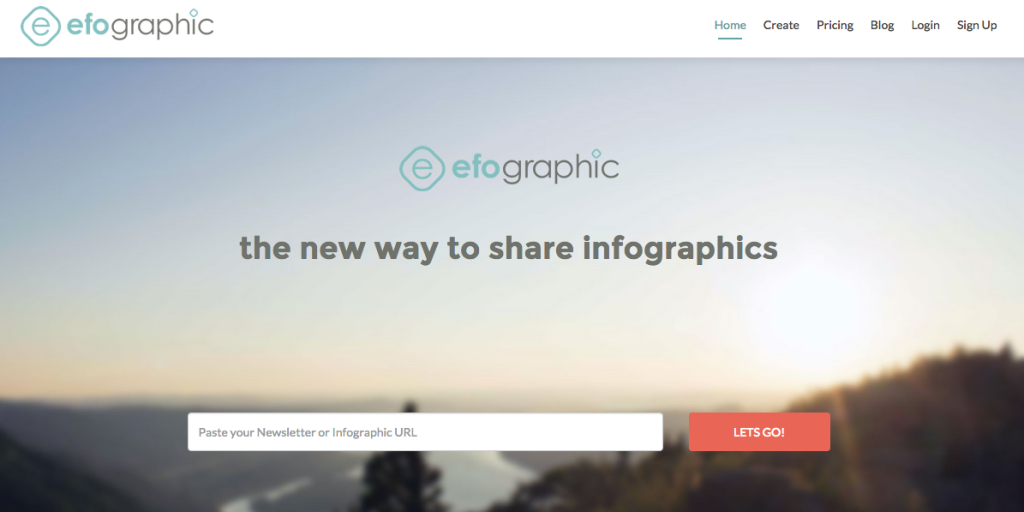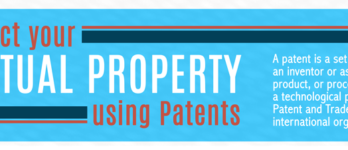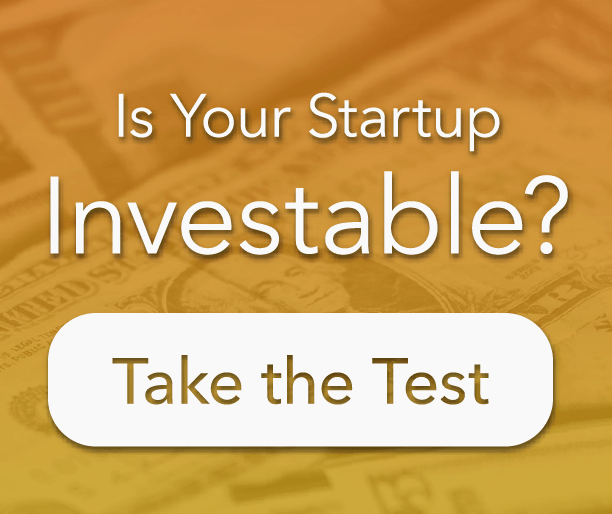
If you have the curse of the entrepreneur, then you are familiar with the insatiable need to launch something – to create something and get it out there.
This is the story of my first startup, Efographic, and the lessons I learned from its failure. I will tell you the story followed by the lessons.
The Beginning of Efographic
You have always been told that solving personal pain is a great way to get started in entrepreneurship. My job, strengths, and passions were in digital marketing so I stumbled upon a need that seemed worth solving. It was a personal pain.
The pain was that when I had a long MailChimp email newsletter that was full of photos, and I wanted to share it to social media, I was forced to choose just one photo as the “social card” to best represent my newsletter in hopes that it would drive the most clicks. So I wanted to create something that put the entire newsletter on social media. Then I realized, that hey, infographics work the same way. When you share an infographic to Facebook, the content gets chopped off and viewers miss the top and bottom parts because it is too long to fit into Facebook’s post parameters.
So, I wanted to create Efographic, a web app that takes a snapshot of an email newsletter or an infographic and then fits the long image into a box, perfect for social media sharing.
I’m not a programmer and I didn’t know the first thing about building apps or websites. So I went to Crew, a more sophisticated and higher-tier Upwork — a matchmaking service for entrepreneurs and developers/designers.
Crew allowed me to post my project and receive bids from developers and designers from across the world. Then I began receiving bids from Nepal, Brazil, and the UK, ranging from individuals to large-scale boutique shops. I was looking for someone who understood the problem and the solution so that they could naturally fill in the gaps where my solution was lacking.
I picked Asim Hussain, a skilled developer in London, who had trouble getting through security in U.S. airports due to his last name. Asim had an impressive portfolio (Google, Huffington Post, etc.) and he was transparent.
We negotiated milestones, refined the final vision for the product, and pulled the trigger.
To pay for the project I went to family, borrowing $5,000. If there was ever a person who believed in me and wanted me to succeed as a young entrepreneur, it was my grandpa. He will always be my first investor.
Development began.
In the meantime, I did as much validation and pre-marketing as I could. I did social ads that linked to a Launchrock landing page to build an email list; I called potential customers on the phone and asked if they would use Efographic. Then I paid $100 to run a Google survey to validate the idea. And, of course, held many discussions on Reddit and social media.
In January 2015, the time came for launch, so I reached out to a Twitter friend to post it on Product Hunt, a great place where new products are discovered online. I had over 2,000 visitors to Efographic that day, as I frantically worked my network to upvote Efographic on Product Hunt.
Seventy-five people signed up for the service. And not a single dollar of revenue came in.
The Product Hunt traffic surge wore off in the next few days. Traffic eventually sunk to 20–30 hits a day. I called digital design agencies across the nation to try to get B2B sales. Nothing. Efographic needed to be revamped. But after long discussions with Asim, it was apparent that design changes would not fix the lack of product-market fit.
In June 2015 — six months later — I pulled the plug.
Was it worth it?
Yes, I would do it all over again because of the lessons I learned. An entrepreneur on Reddit once said:
You learn more in three days of acting than in six months of researching.
I learned many lessons, five of which I would like to share with you.
Lessons
1. Do not cram everything you have ever learned about startups, tech, and design into your first startup.
Instead of a subtle pattern, I used Unsplash photos as the backgrounds. I set up a pay-for-credits revenue model when it should have been free. I tried to make a heartfelt story out of it when it was just a boring resizing tool. The site solved several needs and therefore could help several buyer profiles. WRONG. Pick one need and one buyer profile and focus on making it a perfect fit.
2. Do not become romantically involved with the idea of yourself having the label “founder”.
This is so blinding. The potential customers I called were on the fence, did not understand the concept, or told me yes just so that I would quit bugging them. But I only saw green lights.
Seek to prove yourself wrong. I bought surveys and ads for idea validation but made sure I set myself up for automatic approval so I could use it as a marketing tool (75 people out of a hundred prefer Efographic, see?). To me, all money spent should go towards making the startup stronger, when I wish I would have been okay with spending money on proving the idea wrong. A good idea will stand no matter what and it will sound like this from a customer, “I would pay $__ if that were a real thing.”
3. If there is absolutely no competition, take a pause. This could be a terrible sign.
Any good idea involves one of two things: either it’s an innovation developed upon something that already exists and therefore is relatively inexpensive to build and fraught with competition or it’s a blue ocean where nobody has gone before and it requires mountains of cash.
The two best places to penetrate in a market are 1) one with old and established players none with a colossal majority share or 2) behind a fat company who is spilling blood and capital pioneering a new market. There was nothing like Efographic on the Internet, and while this made me excited that I would be bringing a “new” tool to the Internet, it should have made me think maybe there is nothing like it on the Internet because there is no a market for it.
4. Clever products are never as successful as helpful products.
This was the biggest lesson that I will never forget for the rest of my life. As an entrepreneur launching a startup, your goal is to give your user a fuzzy, warm feeling when they use your product or service. Their life is more enjoyable because of what you have created. It feels so gooooooood. Like food. Like buttery movie theater popcorn sprinkled with chocolate raisins and a large Coke.
Efographic had zero emotion to it, there was no release of neurotransmitters in my brain or in my 90 users. During the development stage, I would tell people I’m founding startup (see lesson #2) and they would say, “Oh, what are you doing?” I would say, “Well, have you ever…” And I would launch into this long pitch. In the end, I would look at their glazed eyes and deadened faces as they say, “Huh.” And then as if they had just woken up they would always say, “That’s clever.” A good product causes a brain to *click* awakening zeal, urgency, and passion.
5. Build your product around a pitch, not a pitch around your product.
Before your startup launches, you will end up giving the pitch hundreds of times to friends, family members, and strangers. I constantly pitched Efographic to almost everyone I met. But it got tiring because Efographic was not a simple pitch and no one but my “niche target audience” would understand it.
In other words, no one said they would use it, it was too complicated. So this is what I learned: if your product does not have a simple pitch, then there’s something wrong with your product. Focus on getting the pitch down first, then build the product to match exactly what the pitch promises. This will keep the product simple and well-designed.
Bonus: I encourage you to not put Product Hunt into your launch strategy just for the sake of removing it as a crutch. Let it be an added bonus, not the crucial meat.
Bonus #2: Move slowly. Rushing leads to poor strategy and poor execution. I felt pressure to cut corners with my developer because of the little amount of time and funding I had. I wish I had taken the time to think through and talk through the ins-and-outs of my business. So do not rush. Take the time to develop a strong launch strategy, build an audience, and form a team and a board of advisors!
11 Suggestions for Creating a Highly Efficient Board of Advisors









